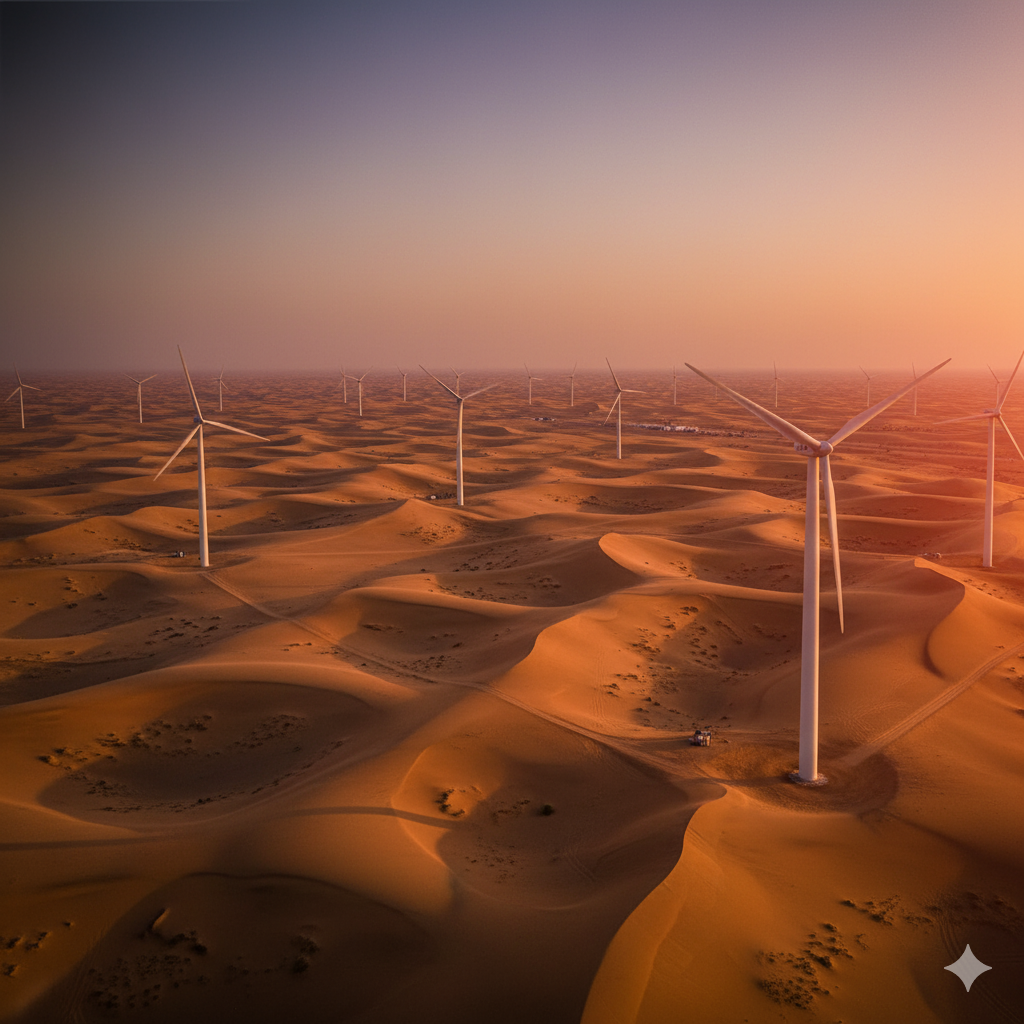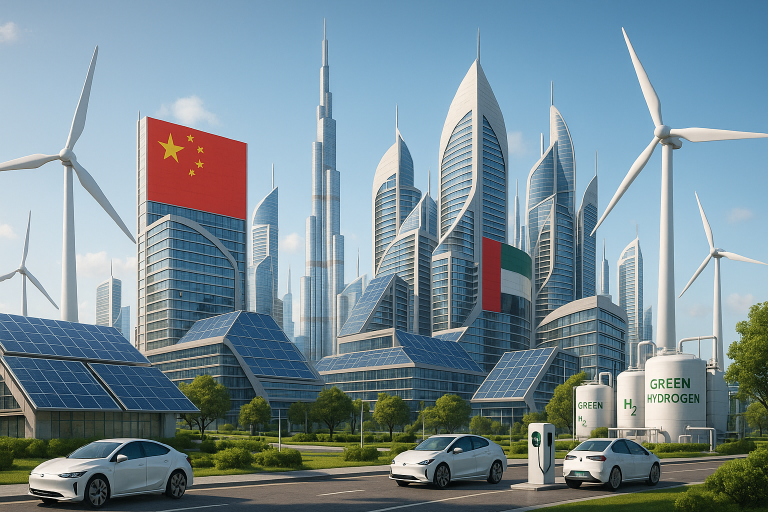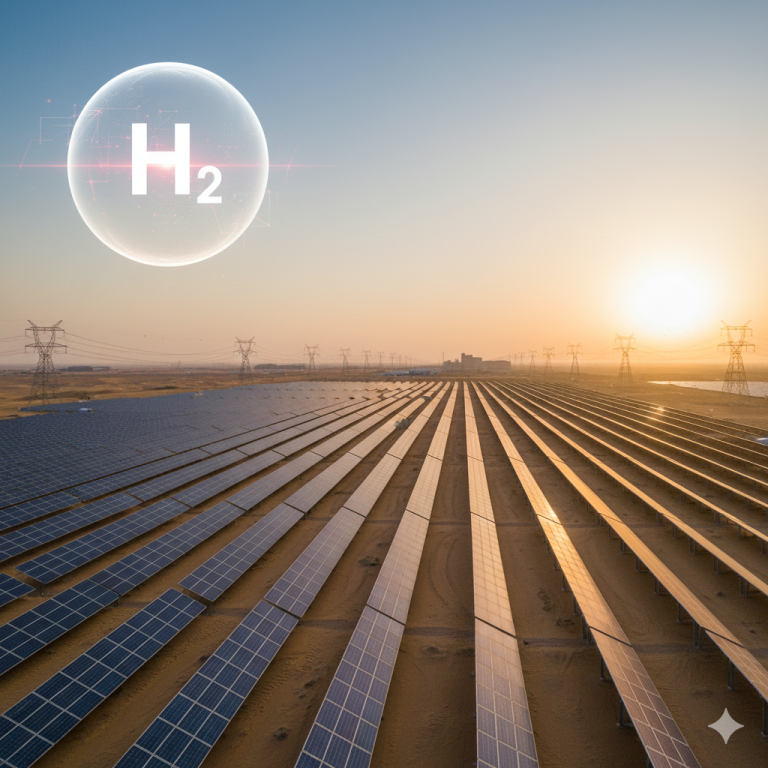A Gust of Change: The UAE’s Wind Power Bet, Made in China
In the sun-drenched expanse of the Arabian Peninsula, where oil wealth has long defined economic might, a subtle yet profound shift is underway. The United Arab Emirates, a nation synonymous with hydrocarbon abundance, is now turning its gaze towards an unlikely source of energy: wind. This pivot, seemingly counter-intuitive given the region’s historically low wind speeds, is not merely an environmental aspiration but a strategic economic imperative. It is a testament to the UAE’s foresight in diversifying its energy mix and securing a sustainable future. Crucially, this ambitious endeavor is being powered, in no small part, by the industrial might and technological ingenuity of China. This article will delve into how China’s prowess in renewable energy is enabling the UAE’s bold wind power bet, exploring the industrial perspective, the historical tapestry of China-UAE energy cooperation, and the promising future that this synergy portends. It is a narrative of shared ambition, technological triumph, and a positive trajectory towards a greener tomorrow.
The Deepening Currents: A History of China-UAE Energy Cooperation
The relationship between China and the UAE has historically been anchored in the robust trade of hydrocarbons. For decades, China, as a burgeoning industrial powerhouse, has been a voracious consumer of oil and gas, with the UAE standing as a reliable and significant supplier. This symbiotic relationship formed the bedrock of their economic ties, fostering mutual growth and prosperity. However, as global energy landscapes began to evolve and the imperative of climate action gained prominence, both nations recognized the need for a strategic reorientation.
The early discussions and agreements on clean energy marked a pivotal turning point. While traditional energy trade continued, a new dialogue emerged, focusing on sustainable development and renewable technologies. This evolution was not accidental; it was driven by a confluence of factors, including global climate commitments, the economic logic of diversification, and the rapid advancements in renewable energy technologies. China, having invested heavily in its domestic renewable energy sector, emerged as a global leader in manufacturing and deploying clean energy solutions.
Key milestones and agreements have since solidified this burgeoning cooperation. The Belt and Road Initiative (BRI), China’s ambitious global infrastructure development strategy, has played a significant role in promoting green energy projects in partner countries, including the UAE. This framework provided a platform for Chinese companies to extend their expertise and technology to the Gulf region, facilitating large-scale renewable energy developments. These collaborations have not only been about technology transfer but also about shared visions for a sustainable future.
The strategic shift towards renewables gained further momentum with the UAE’s declaration of its 2050 carbon neutrality goal. This ambitious target, coupled with China’s similar commitments to peak carbon emissions before 2030 and achieve carbon neutrality by 2060, created a powerful alignment of national interests. Both nations understood that transitioning to a low-carbon economy was not just an environmental necessity but also an economic opportunity. This shared understanding has propelled their cooperation beyond traditional energy trade into the realm of cutting-edge clean energy innovation.
Catching the Unseen Breeze: The UAE’s Wind Power Bet
The UAE’s foray into utility-scale wind power was once considered a distant dream, primarily due to the prevailing perception of low wind speeds across much of the country. However, this perception has been challenged and ultimately overcome by remarkable technological breakthroughs and astute strategic partnerships. The journey to harness the unseen breeze has been a testament to human ingenuity and collaborative spirit.
One of the most significant hurdles was the development of turbines capable of operating efficiently in low wind speed environments. This challenge was met through advances in material science and aerodynamics, which led to the creation of larger, more efficient wind turbine blades and optimized designs. These innovations allow turbines to capture kinetic energy even from gentle gusts, making wind power economically viable in regions previously deemed unsuitable. Furthermore, scientific research has uncovered unique weather phenomena in the UAE that generate higher wind speeds at night, providing an unexpected boost to the potential for wind energy generation.
The role of Chinese companies in this transformation has been indispensable. Entities like the Power Construction Corporation of China (PowerChina) and GoldWind International have been at the forefront of implementing the UAE’s wind power demonstration project. Their involvement brought not only advanced turbine technology but also extensive experience in large-scale project execution. This collaboration exemplifies a synergistic partnership where Masdar, the UAE’s leading clean energy company, actively sought out global technology leaders and turbine manufacturers to realize its vision.
The culmination of these efforts is the UAE Wind Program, a landmark 103.5-megawatt (MW) project that has introduced cost-effective, large-scale wind power to the UAE’s electricity grid. This program spans four strategic locations: Sir Bani Yas Island in Abu Dhabi (45MW capacity wind farm plus 14 MWp solar farm), Delma Island (27MW), Al Sila in Abu Dhabi (27MW), and Al Halah in Fujairah (4.5MW) [1]. The program is projected to power more than 23,000 UAE homes annually and displace approximately 120,000 tonnes of carbon dioxide emissions each year, equivalent to removing over 26,000 petrol-powered cars from the roads [1]. This project is not just an engineering marvel; it represents the UAE’s first commercial-size wind project, marking a significant stride in its energy diversification strategy.
The economic and environmental benefits of this initiative are manifold. Beyond the obvious reduction in carbon emissions, the project contributes to energy diversification, lessening the UAE’s reliance on fossil fuels and enhancing its energy security. It also fosters job creation within the burgeoning renewable energy sector, stimulating local economies and developing a skilled workforce. The success of the UAE Wind Program serves as a powerful demonstration of how technological innovation, coupled with strategic international partnerships, can unlock new pathways to sustainable development, even in challenging environments.
The ‘Made in China’ Advantage: Powering the Green Transition
China’s ascent as a global leader in renewable energy manufacturing and technology is a narrative of strategic investment, relentless innovation, and unparalleled industrial scale. This
dominance is not accidental; it is the result of decades of strategic planning, massive government investment, and a relentless pursuit of technological excellence. This has translated into a significant ‘Made in China’ advantage that is now powering the UAE’s green transition.
China’s leadership in renewable energy manufacturing is evident in its vast production capacities and the cost-effectiveness of its solutions. Chinese companies have mastered the art of mass-producing high-quality wind turbines, solar panels, and other renewable energy components at competitive prices. This scale of production has driven down global costs, making renewable energy more accessible and economically attractive worldwide. Furthermore, Chinese firms have been at the forefront of innovation in wind turbine technology, developing advanced designs that are more efficient and adaptable to various environmental conditions, including the low wind speeds prevalent in the UAE.
The export of Chinese technology and equipment to the UAE is a clear manifestation of this advantage. As highlighted earlier, companies like PowerChina and GoldWind International have been instrumental in the UAE Wind Program. PowerChina, a state-owned enterprise, brings extensive experience in engineering, procurement, and construction (EPC) for large-scale energy projects globally. GoldWind International, one of the world’s leading wind turbine manufacturers, provides the cutting-edge turbine technology specifically designed for low-wind-speed environments. Their collaboration with Masdar ensures that the UAE benefits from the latest advancements and proven expertise in the wind energy sector.
Beyond wind power, Chinese companies have also made significant contributions to the UAE’s solar energy landscape. For instance, Shanghai Electric played a crucial role in building the fourth phase of the Mohammed bin Rashid Al Maktoum Solar Park in Dubai, a concentrated solar power and photovoltaic project with a total installed capacity of 950 megawatts [2]. Similarly, China Machinery Engineering Corporation, a subsidiary of China National Machinery Industry Corporation, constructed the Al Dhafra PV2 solar power plant in Abu Dhabi, a 2.1-gigawatt facility [2]. These projects underscore the breadth and depth of China’s involvement in the UAE’s clean energy transition, showcasing its comprehensive capabilities across various renewable technologies.
The strategic alignment between China’s Belt and Road Initiative (BRI) and the UAE’s energy diversification goals has further cemented this partnership. The BRI, with its emphasis on green development and sustainable infrastructure, provides a framework for Chinese companies to invest in and contribute to renewable energy projects in partner countries. This initiative is not just about physical infrastructure; it also facilitates the transfer of expertise and local capacity building. Chinese firms often engage in training local workforces, sharing technical knowledge, and fostering a skilled labor pool within the UAE, thereby contributing to the long-term sustainability of these projects and the broader development of the UAE’s renewable energy sector.
A Shared Horizon: Future Outlook and Implications
The successful collaboration between China and the UAE in the wind power sector is more than just a series of projects; it signifies a deepening of their strategic partnership, moving beyond traditional oil trade to embrace the future of clean energy. This shift is poised to have far-reaching implications for both nations and the broader global energy transition.
Firstly, it will undoubtedly lead to a strengthening of China-UAE strategic partnership through clean energy. As both countries continue to prioritize sustainable development and climate action, their shared interests in renewable energy will create new avenues for diplomatic, economic, and technological cooperation. This partnership can serve as a model for South-South cooperation in addressing global environmental challenges.
Secondly, the success in wind power opens the door for potential for further collaboration in other renewable energy sectors. The UAE, with its abundant sunshine, is already a leader in solar power. Future collaborations could explore advanced solar technologies, such as concentrated solar power with storage, or delve into emerging fields like green hydrogen production. China, with its extensive research and development capabilities and industrial scale in these areas, is a natural partner for the UAE’s ambitious green hydrogen strategy.
Thirdly, the UAE’s proactive approach to energy diversification, particularly its embrace of wind power with Chinese assistance, positions it as a model for other Gulf nations. Many countries in the region face similar challenges of high fossil fuel dependence and the need to transition to cleaner energy sources. The UAE’s experience demonstrates that with political will, technological innovation, and strategic international partnerships, even countries with perceived limitations can successfully integrate renewable energy into their grids. This could inspire a ripple effect across the Gulf Cooperation Council (GCC) states, accelerating the region’s overall energy transition.
Finally, the global implications of China-UAE cooperation in accelerating the energy transition are significant. As two influential nations, their joint efforts in developing and deploying renewable energy technologies send a powerful message to the international community. It highlights the feasibility and benefits of cross-border collaboration in achieving global climate goals and fostering a sustainable energy future. This partnership contributes to the collective effort to reduce global carbon emissions and mitigate the impacts of climate change.
Conclusion
The UAE’s bold venture into wind power, significantly bolstered by China’s industrial might and technological expertise, marks a pivotal moment in the global energy transition. What was once considered an improbable endeavor in a region known for its oil wealth and low wind speeds has become a tangible reality, thanks to a synergistic partnership between two forward-looking nations. China’s pivotal role, from providing advanced turbine technology to facilitating large-scale project execution, has been instrumental in realizing the UAE’s wind power ambitions.
This collaboration is a testament to a successful partnership driving sustainable development, showcasing how shared visions and technological synergy can overcome environmental challenges and economic dependencies. As the world grapples with the urgent need for cleaner energy, the China-UAE cooperation in wind power stands as a beacon of hope, demonstrating that a greener, more sustainable future is not only possible but is actively being built, one gust of change at a time.
References
[1] Masdar. (n.d.). UAE Wind Program. Retrieved from https://masdar.ae/en/renewables/our-projects/uae-wind-program
[2] State-owned Assets Supervision and Administration Commission of the State Council. (2025, January 10). Chinese Enterprises Empower UAE’s Clean Energy Transition. Retrieved from http://en.sasac.gov.cn/2025/01/10/c_18651.htm







